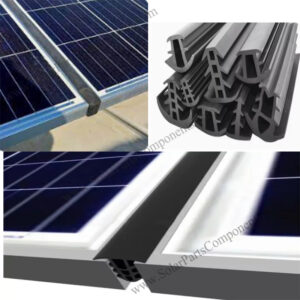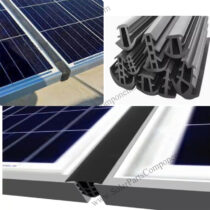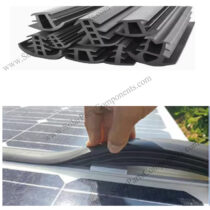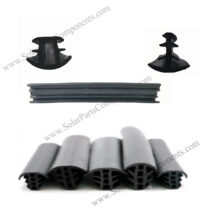Why do solar panels require rubber seal strips?
Rubber seal strips are critical for maintaining the operational stability of solar panel systems. They protect against moisture, dust, and other environmental factors that could compromise energy efficiency and equipment lifespan. Here are the key reasons:
1.Prevent moisture intrusion to avoid short circuits and corrosion.
Solar panels contain electronic components, circuit boards, and junction boxes. If rainwater or moisture seeps in, it may cause short circuits, corrosion, and oxidation, which in turn affect power output and even lead to equipment failure. Rubber seal strips effectively seal edges and seams, blocking moisture penetration to ensure stable system operation.
2.Enhance weather resistance and extend service life.
Solar panels are exposed long-term to harsh conditions such as sunlight, rain, strong winds, and sand. Rubber seal strips provide protection against water, dust, UV rays, and weathering, preventing aging, deformation, or cracking caused by prolonged environmental exposure. In climates with alternating high and low temperatures, they also prevent gap enlargement due to thermal expansion and contraction, maintaining long-term sealing performance.
3.Block dust and debris to preserve energy efficiency.
Sand, dust, fallen leaves, or insects may enter gaps at the edges of solar panels, interfering with circuit boards or reducing photoelectric conversion efficiency. Rubber seal strips seal frames and joints, minimizing debris accumulation and keeping panel surfaces clean to maintain optimal power generation.
4.Strengthen structural stability and prevent loosening.
Rubber seal strips typically have elasticity and pressure resistance, allowing them to absorb vibrations and impacts. This reduces screw loosening or structural deformation caused by wind pressure or earthquakes. During high winds or severe weather, rubber seal strips provide additional protection to keep solar panels securely fastened.











